Elephant Shrews live throughout Africa in countries like South Africa, Namibia, Botswana, Tanzania, and Kenya.
Elephant shrews are little animals found across the African continent. Some elephant shrew facts include the many species that often inhabit mountains, deserts, and dense forest environments. Interestingly, these tiny creatures are related to elephants but do not have a similar lifespan as they only live up to two years in the wild. Elephant shrews also face many predators, like snakes and birds of prey, as well as other threats. Still, they have used their strong hind legs and powerful senses of smell and hearing to hone their survival skills. Learn more about elephant shrew fun facts, and not-so-fun facts below.

1. There are 20 elephant shrew species
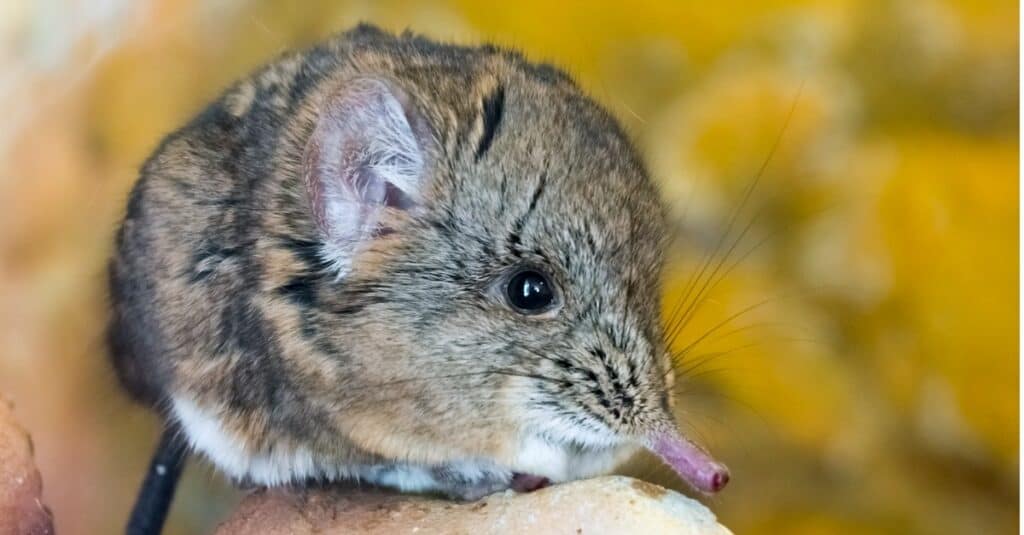
There are 20 species of elephant shrews, and this animal is related to real elephants and not
rodents
.
©iStock.com/belizar73
Elephant shrews belong to the family Macroscelididae. There are an estimated 20 different species of elephant shrews. The family name, Macroscelididae, is derived from Greek, with ‘macro’ meaning long and ‘skelidos’ meaning legs. These tiny animals take their name from their appearance and long legs. Other names for elephant shrews are ‘jumping shrews’ and ‘sengi.’
2. Elephant shrews are not rodents

Elephant shrews, which got their name from their elephant-like snouts, are not rodents.
©Joey Makalintal / Creative Commons – Original
People often compare elephant shrews to mice or gerbils because of their appearance and shape. Although they may appear to belong to the rat family, elephant shrews, and rodents do not share DNA. And while they are not rodents, neither are they shrews. Instead, these animals are sengis and share a closer link with tenrecs and moles.
3. Elephant shrews have tiny trunks

The most unique feature of the elephant shrew is its prominent little trunk.
©iStock.com/phototrip
Elephant shrews got their name from their elephant-like snout. Their snouts are long and flexible, which allows them to hunt for insects. Elephant shrews are tiny, with their bodies growing four to 12 inches in length. Their tails grow up to nine inches. Most elephant shrews reach adult weights of less than a pound, but some species can weigh up to one and a half pounds.
These tiny creatures have short, stiff, and glossy fur like rodents. But, depending on the species, their hair can be black, grey, brown, white, tan, or golden colored. Some species even have a checkered coat with multiple colors. Elephant shrews also feature scaly tails, powerful hind legs, and long feet. They can leap up to three feet in the air and run up to 18 miles per hour to escape predators.
4. They thrive in desert environments and tropical forests
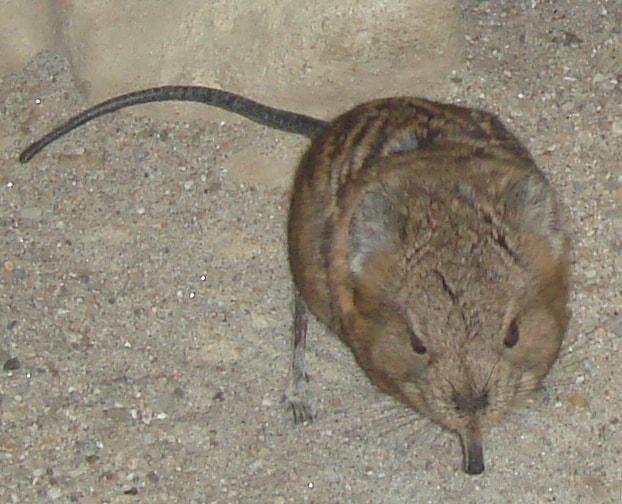
©ElinorD / Creative Commons – Original
Elephant shrews are found across Africa and are endemic to this continent. Elephant shrews primarily inhabit arid regions across Africa, like stone deserts, savannas, and arid steppes. And while they thrive in the Namib Desert, one of the driest places in the world, they also do well in the tropical forests of East Africa.
5. Elephant shrews are insectivores
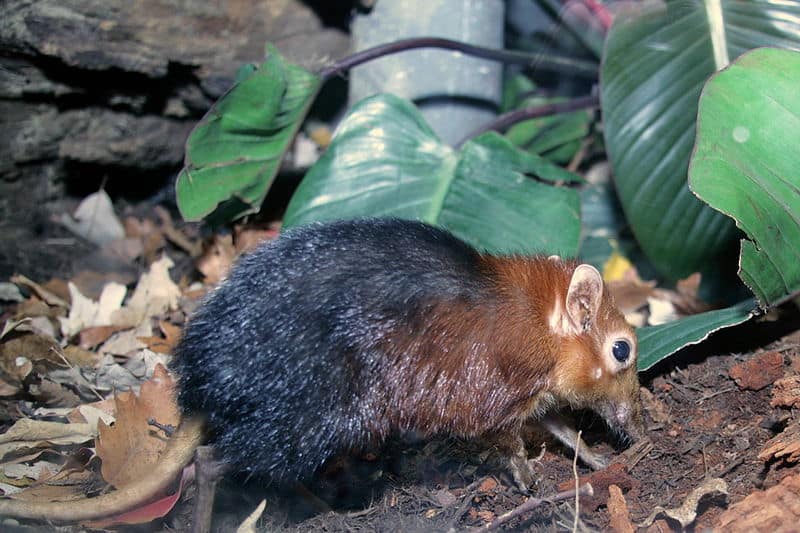
Elephant shrews are insectivores, feeding on ants, termites, worms, spiders, centipedes, and millipedes.
©Cliff / Creative Commons – Original
Elephant shrews thrive on a diet of ants, termites, worms, spiders, centipedes, and millipedes. They also eat leaves, fruits, and seeds if their favorite foods are unavailable. These shrews have extremely well-developed senses of sight, hearing, and smell which help them search for food and escape predators. Elephant shrews use their elephant-like noses with their paws to clear pathways in the ground. They do this to lure insects. Then, they use their long, thin tongues for hunting and eating insects, similar to how anteaters hunt and feed.
6. They are a vulnerable, endangered species
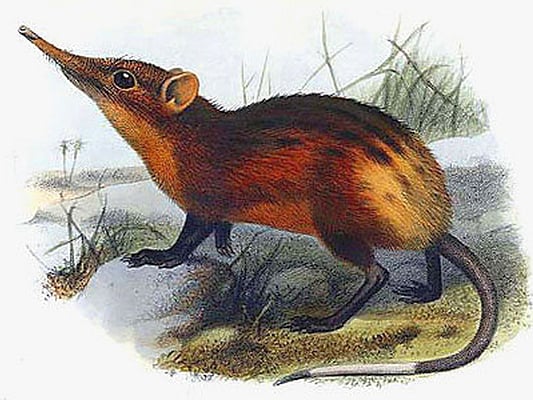
The Golden-Rumped Elephant Shrew is an endangered species of Elephant Shrew.
©(533 × 400 pixels, file size: 134 KB, MIME type: image/jpeg) – Original
Elephant shrews have a wide range of predators and threats. And because they are tiny, they are the favorite food of snakes, lizards, and birds of prey. But they are pretty tricky to catch. However, one of the biggest threats to elephant shrews is habitat loss due to deforestation. This habitat loss is often due to agriculture and logging of forests, drastically impacting the elephant shrew population. So, this tiny relative of the elephant is endangered, with the gray-faced sengi and golden-rumped elephant shrews being the most endangered species.
7. Elephant shrews are monogamous and fiercely territorial

Elephant shrews reach sexual maturity at 45 days of age, and females can give birth during their first year of life.
©Brent and MariLynn / Creative Commons – Original
Elephant shrews have a short lifespan. In the wild, they live for about two years but reach approximately four years in captivity. They reach sexual maturity at 45 days old, and females will give birth to several litters during the year. Female elephant shrews are pregnant for 45 to 60 days and give birth to a litter of one to three young. Young elephant shrews are weaned after a week and often leave the nest after 15 days. These animals are also monogamous, mating for life, and will defend their territory fiercely with their partners.
8. Elephant shrews are non-venomous
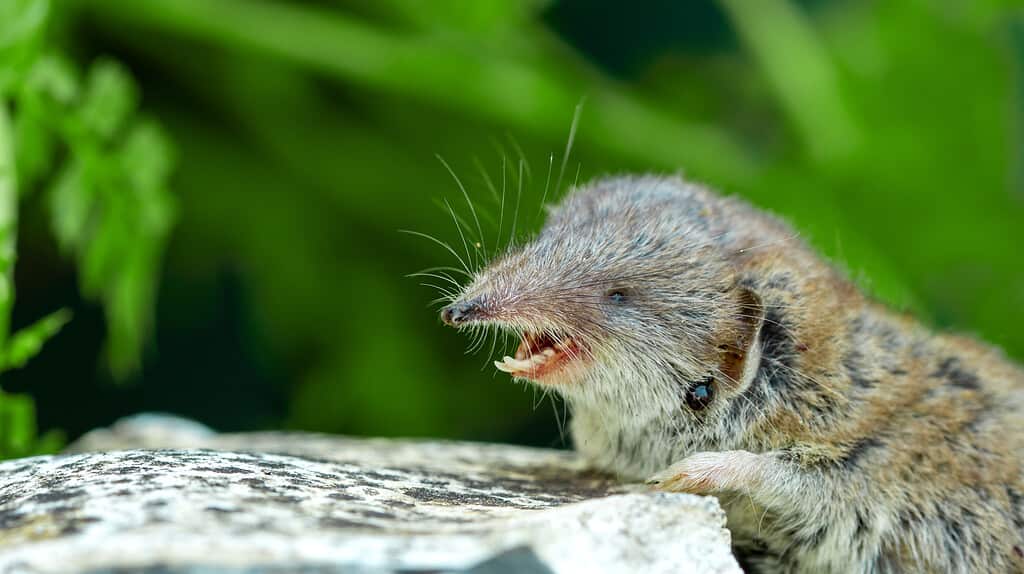
Unlike true shrews, elephant shrews are non-venomous.
©Mabeline72/Shutterstock.com
Elephant shrews are not venomous like shrews. Elephant shrews are similar to tenrecs and moles, despite their name. However, unlike shrews, these animals are not poisonous. In contrast, true shrews possess venom, which is not fatal to humans. But, if a shrew bites you, it will still be painful and probably cause an infection.
On the other hand, even though elephant shrews are non-toxic, this does not mean they are friendly. These wild animals are active and will likely retaliate against humans and other predators with full force. So, if you want to keep one captive, ensure they have a mate. They will be happier, and you will be safer when handling them.
9. They communicate through scent glands and sounds
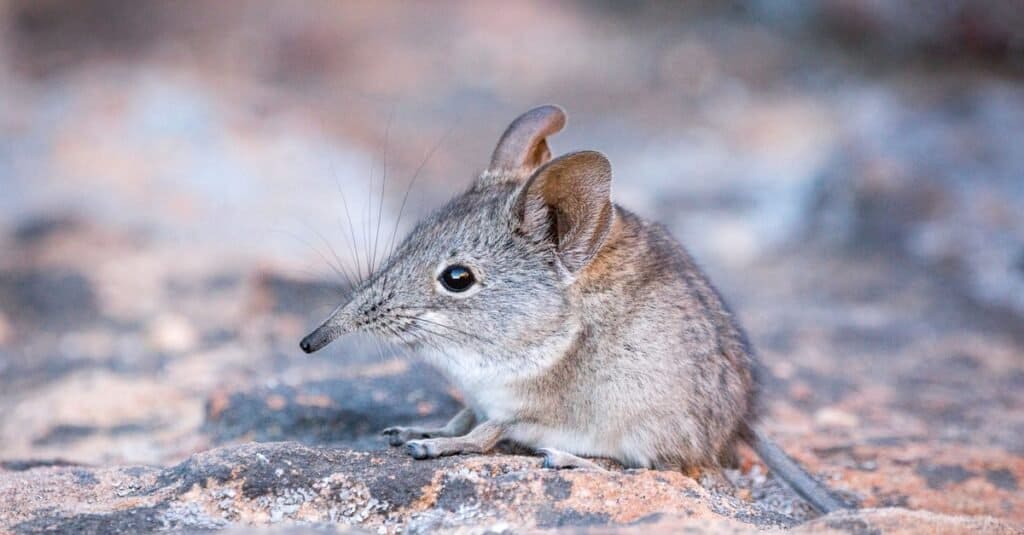
Elephant shrew fun
facts include this one where the elephant shrew actually shares close ties with tenrecs and moles
, but is also related to real elephants.
©Nadine Klose/Shutterstock.com
Elephant shrews communicate through scent glands and sounds. These animals mark their territory using scent glands and share information using squeaks and squeals. Young elephant shrews will also make pleasurable noises during nursing. When angry or threatened, these animals will bang their feet on the ground to discourage the threat. When protecting their territory, elephant shrews will fight others noisily. If owners handle them roughly, they will voice their displeasure through a loud squeaking.
10. Elephant shrews are related to real elephants
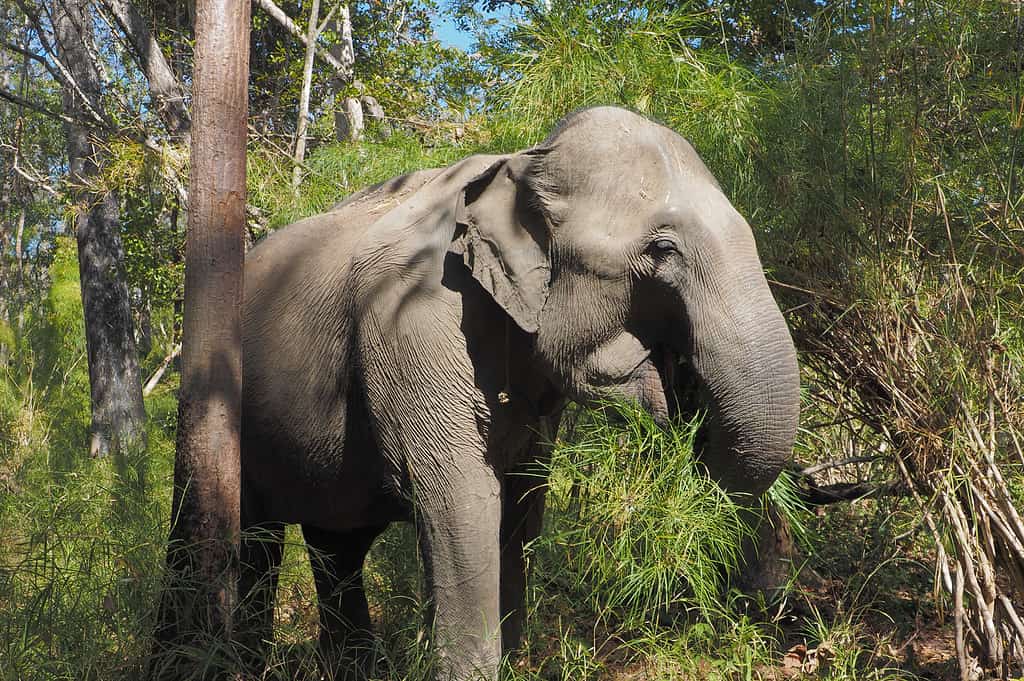
DNA evidence reveals that elephant shrews are distantly related to elephants.
©DorSteffen/Shutterstock.com
Elephant shrew fun facts include this one where the elephant shrew actually shares close ties with tenrecs and moles, but is also related to real elephants. After scientists studied the DNA of elephant shrews, they discovered a connection. This connection highlights the sengi belonging to a group known as the Afrotheria group. This group comprises several African mammals, aardvarks, sea cows, and elephants. And although the relationship between the elephant shrew and real elephants is distant, it proves they are related.
Thank you for reading! Have some feedback for us? Contact the AZ Animals editorial team.







